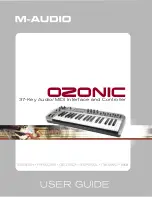
Dual Pneumatic
I n s t a l l a t i o n , O p e r a t i o n & S e r v i c e M a n u a l
4
www.trioniaq.com
II. SYSTEM OPERATION
The Dual Pneumatic atomizing system operates with air and
water under pressure - air at approximately 30 psi and water
at approximately 32 - 38 psi. Air consumption is figured at
.12 SCFM per lbs. of water atomized per hour. A safety
factor of 20% should be added for any potential line losses.
Operation is fully automatic and controlled by humidistats.
When the relative humidity (RH) level drops below the
setting on the control humidistat, the contacts on the control
humidistat close the circuit, opening the solenoid valve on the
air control section. As soon as pressure builds up sufficiently
to atomize, the air pressure switch closes the circuit to the
water solenoid valve, starting water flow. Water can not flow
without adequate air pressure. All valves close if there is a
power failure. The water solenoid will close if there is an air
compressor failure.
When the desired level of RH is reached, the humidistat
breaks the circuit, and all solenoid valves close, shutting
off flow of air and water to the heads. The three-way water
solenoid bleeds off the water pressure instantly, allowing the
water valve seat in the head to close immediately, preventing
any chance of dripping or spitting. At the end of each cycle,
the air pressure is allowed to fall gradually to zero through
the heads, blowing all water from the mixing chamber of the
heads. The stainless steel cleaning needle connected to the
diaphragm cleans the water orifice of the heads at the end
of each ON cycle. By completely drying the mixing chamber
of each head, mineral build-up is prevented. This cleaning
is so effective that YEARLY maintenance is typically all that
is required!
III. SYSTEM COMPONENTS
A Dual Pneumatic atomizing system consists of atomizing
nozzles, control sections, humidistats, and an adequate air
and water supply.
Atomizing Heads
Atomizing heads are available in capacities of 6, 8, 10, 12, or
15 lbs. of water per hour.
The proper head capacity for a given project is selected on
the basis of installed height of the head above the floor, clear
area available for spray patterns to evaporate, and conditions
to be maintained in the humidified space.
Atomizing head assemblies are available in three versions.
The
A-17 assembly
(Figure 1) consists of two identical
capacity heads spraying in opposite directions and is
used when areas are clear of obstacles in both directions
and where distances shown in installation section can be
observed.
The
B-13 assembly
(Figure 2) consists of two identical
capacity head assemblies discharging in the variable
directions of discharge.
Figure 1. A-17 Head Assembly




































